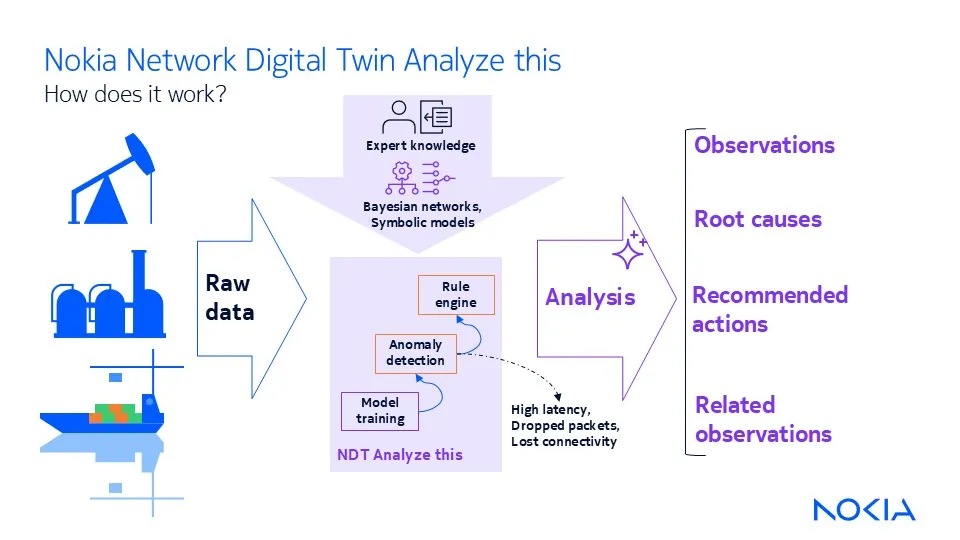Use expert knowledge and AI to detect industrial private wireless network errors and so much more

Last year, I talked about our Network Digital Twin and how it helped us answer the questions: “What happened to my devices” and “what is happening to my devices?” on the private wireless network. Our goal was to answer the next questions: “Why is it happening to my devices?”
We were collecting device telemetry information from scores of devices and knew that we can use that data to answer the question we had on our mind: “Why is it happening to my devices?” We looked for anomalous behavior and tried to use that to determine the root cause. With those questions in mind and access to telemetry data, we sought answers from our networking experts and operations engineers.
It starts with increased latency, dropped packets and lost connection
We learned that if we started seeing anomalous behavior in the devices’ latency, packet or connectivity loss, we could address many observed issues. We encoded our findings into an AI-powered model and ran the model incessantly. We then fine-tuned it and created a new feature, “Network Digital Twin Analyze this”.

“NDT Analyze this” continually examines device telemetry data and locates anomalous behavior. When observed, this triggers a deep-dive root cause analysis as if a network engineer were running it. It can report over 100 different types of key performance indicator (KPI) observations with customer-tunable sensitivities and perform immediate correlations such as
- Device and cell correlations: KPIs are evaluated across all devices connected to the cell and all devices in the network. This speeds issue identification, whether that issue is specific to the device or affects the entire cell or network.
- Location correlations: Issues related to the devices’ locations are evaluated. For example, when looking holistically across devices, it may be found that a device is connecting to the wrong cell, or to a cell that is too far away for optimal performance. Multiple devices may be reporting similar issues in the same area, or neighboring cells could be creating interference.
- Time and day correlations: This identifies if an issue is occurring at the same time of the day across multiple days or on the same day across weeks. It also checks if a device’s performance notably improves or degrades after a reboot.
So, what do I do with all this data?
“NDT Analyze this” looks at all the related observations in each report and provides a list of probable root causes. Each root cause is accompanied by a short description, suggested next steps, and a confidence score of high, medium and low. The person using this analysis can apply their expertise to fix the underlying problem.
The observation reports also show the map location of the devices when the issue occurred, enabling the users to view the device KPIs. They can experience the degradation of performance by playing back the KPIs on the map to see what led to the issue.
If I suspect a device issue, can I confirm my findings with “NDT Analyze this”?
The simple answer is YES. Users can run a manual deep-dive analysis of any device in their network over any time frame after “NDT Analyze this” has been trained. We call this a ‘Device health check’. Full analysis reports are generated for any anomalous behavior found, along with helpful summary stats.
I run a factory and know nothing about private wireless. How does “NDT Analyze this” help me?
This was one of the key reasons behind creating this new feature. Some of our private wireless customers have wireless network experts. For them “NDT Analyze this” adds another layer of visibility to what is happening in the network. For customers focused on running their business, “NDT Analyze this” provides the expertise that may be lacking, proactively notifies them of potential issues, and recommends solutions. Wireless network terms are explained so that you don’t need to know your RSRQ from your RSRP.
Increasing customer satisfaction
We showed this feature to our business development team; they immediately appreciated its value and said that it could be the differentiation between a satisfied customer and a delighted one.
Bottom line - proactive problem-solving saves money
“Nokia Network Digital Twin Analyze this” will cut down the time between finding and fixing issues, thereby increasing efficiency and saving our customers time and money.


